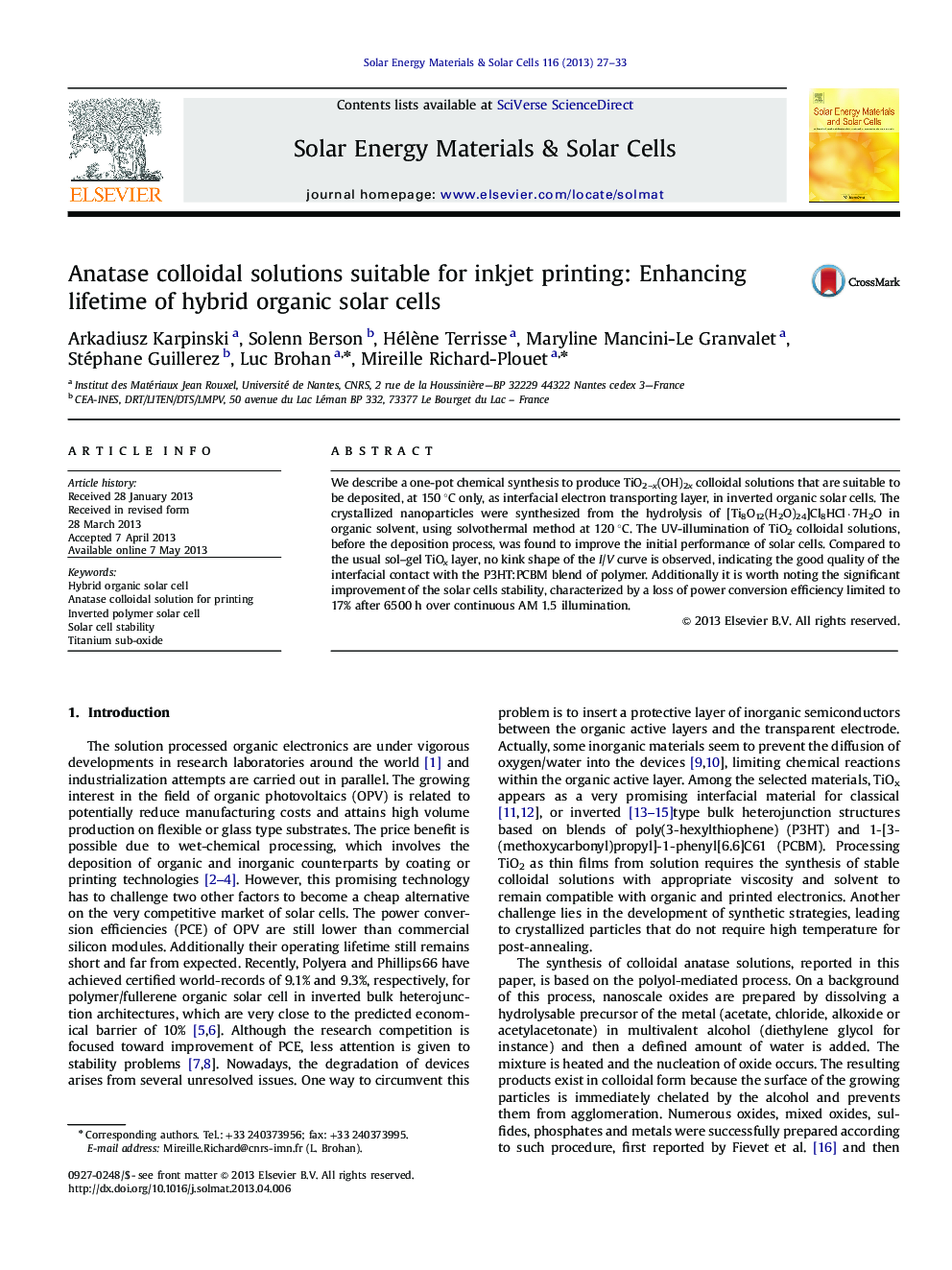| Article ID | Journal | Published Year | Pages | File Type |
|---|---|---|---|---|
| 6536193 | Solar Energy Materials and Solar Cells | 2013 | 7 Pages |
Abstract
We describe a one-pot chemical synthesis to produce TiO2âx(OH)2x colloidal solutions that are suitable to be deposited, at 150 °C only, as interfacial electron transporting layer, in inverted organic solar cells. The crystallized nanoparticles were synthesized from the hydrolysis of [Ti8O12(H2O)24]Cl8HCl·7H2O in organic solvent, using solvothermal method at 120 °C. The UV-illumination of TiO2 colloidal solutions, before the deposition process, was found to improve the initial performance of solar cells. Compared to the usual sol-gel TiOx layer, no kink shape of the I/V curve is observed, indicating the good quality of the interfacial contact with the P3HT:PCBM blend of polymer. Additionally it is worth noting the significant improvement of the solar cells stability, characterized by a loss of power conversion efficiency limited to 17% after 6500 h over continuous AM 1.5 illumination.
Related Topics
Physical Sciences and Engineering
Chemical Engineering
Catalysis
Authors
Arkadiusz Karpinski, Solenn Berson, Hélène Terrisse, Maryline Mancini-Le Granvalet, Stéphane Guillerez, Luc Brohan, Mireille Richard-Plouet,
